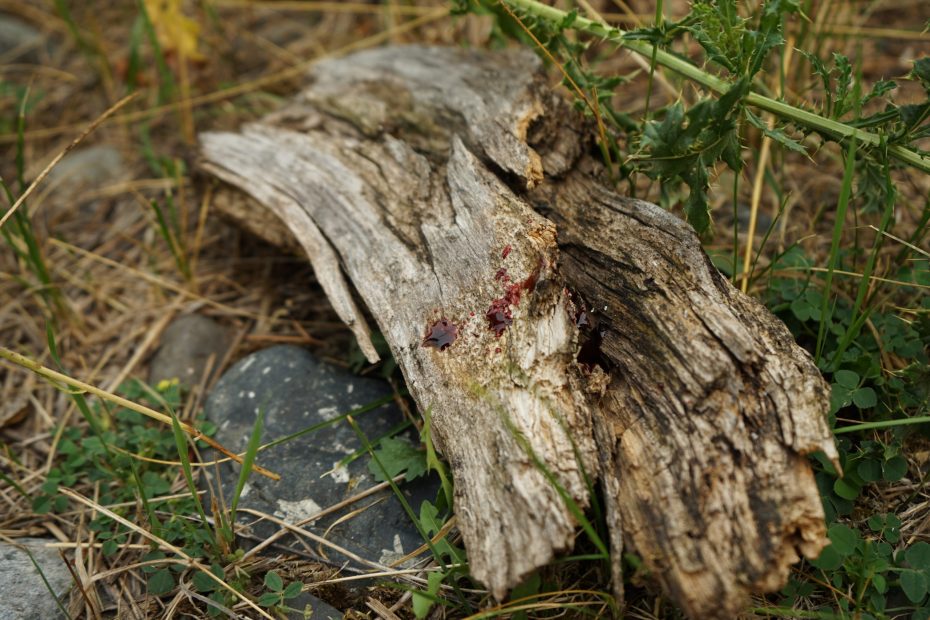September 19th, 2019
The sun’s orange light, made dramatic by smoke from distant wildfires, filtered through the needles of the red firs and lodgepole in the last hour of the best day of the year. My client and I were thick in the elk, with the bugles of eight rutting bulls seeming almost constant, like they were competing members of some shrill orchestra. I called the bulls in one by one, cheating to a crosswind. We weren’t interested in the younger satellite bulls but had to get through them to reach the main group of cows and the mature herd bull. The trick was to get the satellites to pull off from the main bunch and then scare them away without alerting the herd. With only minutes left of shooting light, the sun beyond the horizon, the herd bull came at a sprint down a lane in the pines in pursuit of a hot cow. At 50 yards I told my hunter to get ready. The cow held her speed and I could see dust flying on every hoof strike of the bull behind her. At 30 yards I told my hunter, “draw!” Holding a Montana decoy in two hands shaking with the pulse of adrenaline; I tightened my neck and made a cow bark through the reed in my mouth. Both elk slammed on the brakes and looked at me, the bull presented broadside 14 yards from the hunter. He released his arrow and I heard the crack of broadhead hitting bone, and saw the bull’s head snap backward as he and the cow wheeled and ran into the timber. I walked over to my hunter and he asked, “where did I hit him?” The news I had for him wasn’t good.
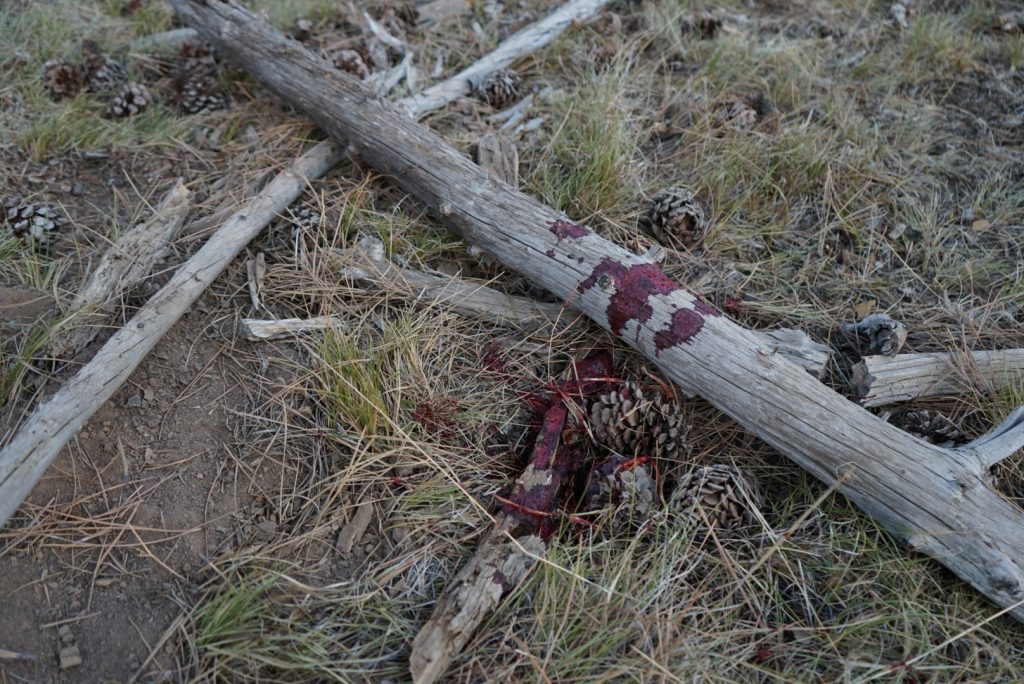
We practice our fitness, agonize for hours over what type of gear to purchase, shoot our bows and rifles, read articles, study books, ask questions to the old timers about where to go and how to glass and call, buy the best camo, and study maps like we are searching for treasure. We practice every aspect of hunting that we can think of except for one— blood trailing. What we do after the shot is critical, but little is written about the subject and it’s rarely discussed. Your ability to follow the traces an animal leaves behind will make the difference between success and failure because not every shot hits its mark.
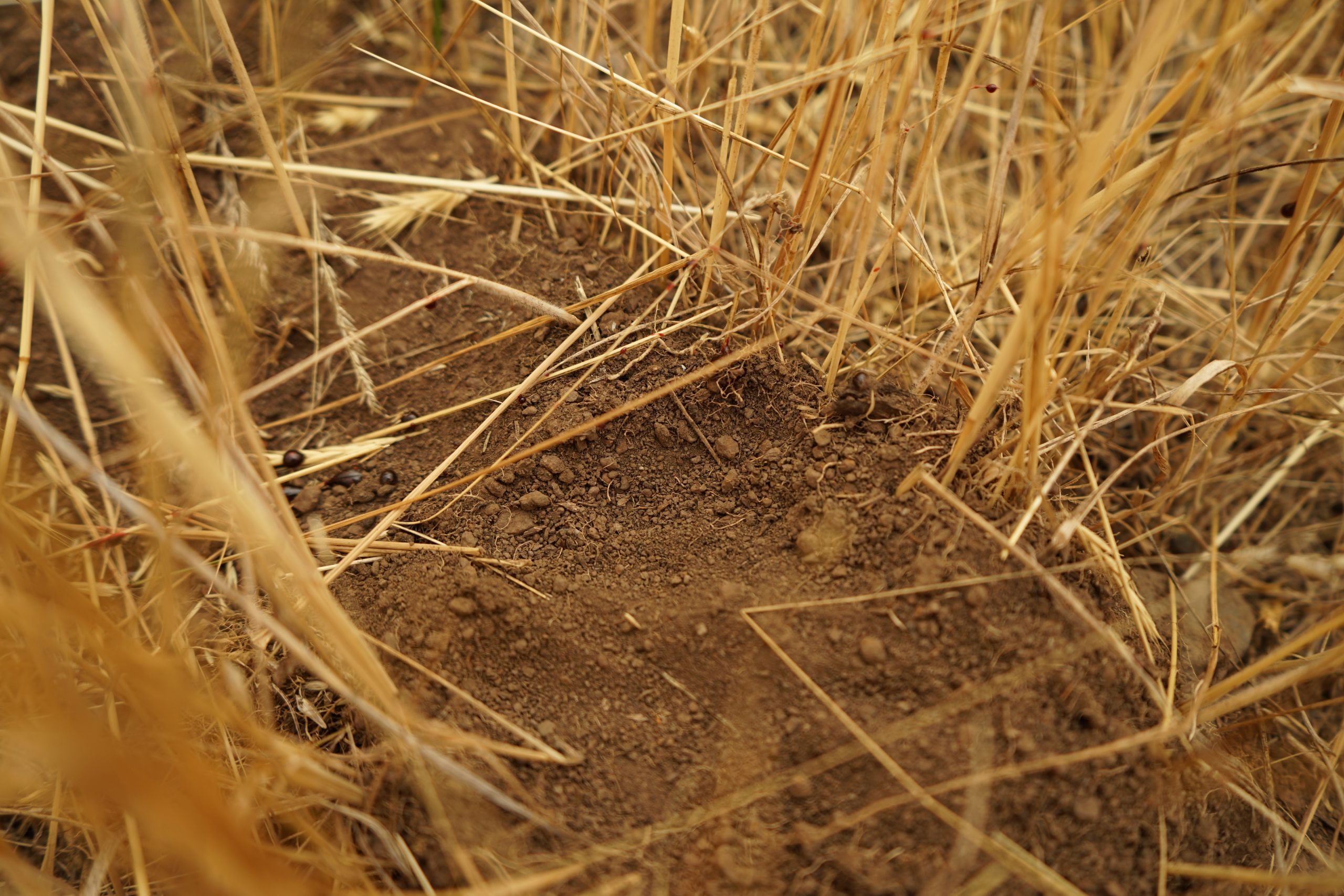
There are some differences between archery and rifle blood trails, but for this article, I am going to lean towards archery since it’s the season we are in and a more common area for blood trailing.
First, if you are the shooter try to turn your shot into an observation and a memory by freezing the moment in your mind. That said, shooters are poor witnesses because they are excited and tend to “see” what they intended rather than what happened. Don’t be hard on yourself here, I am no different and have given up on telling people with any degree of certainty where I think I hit.
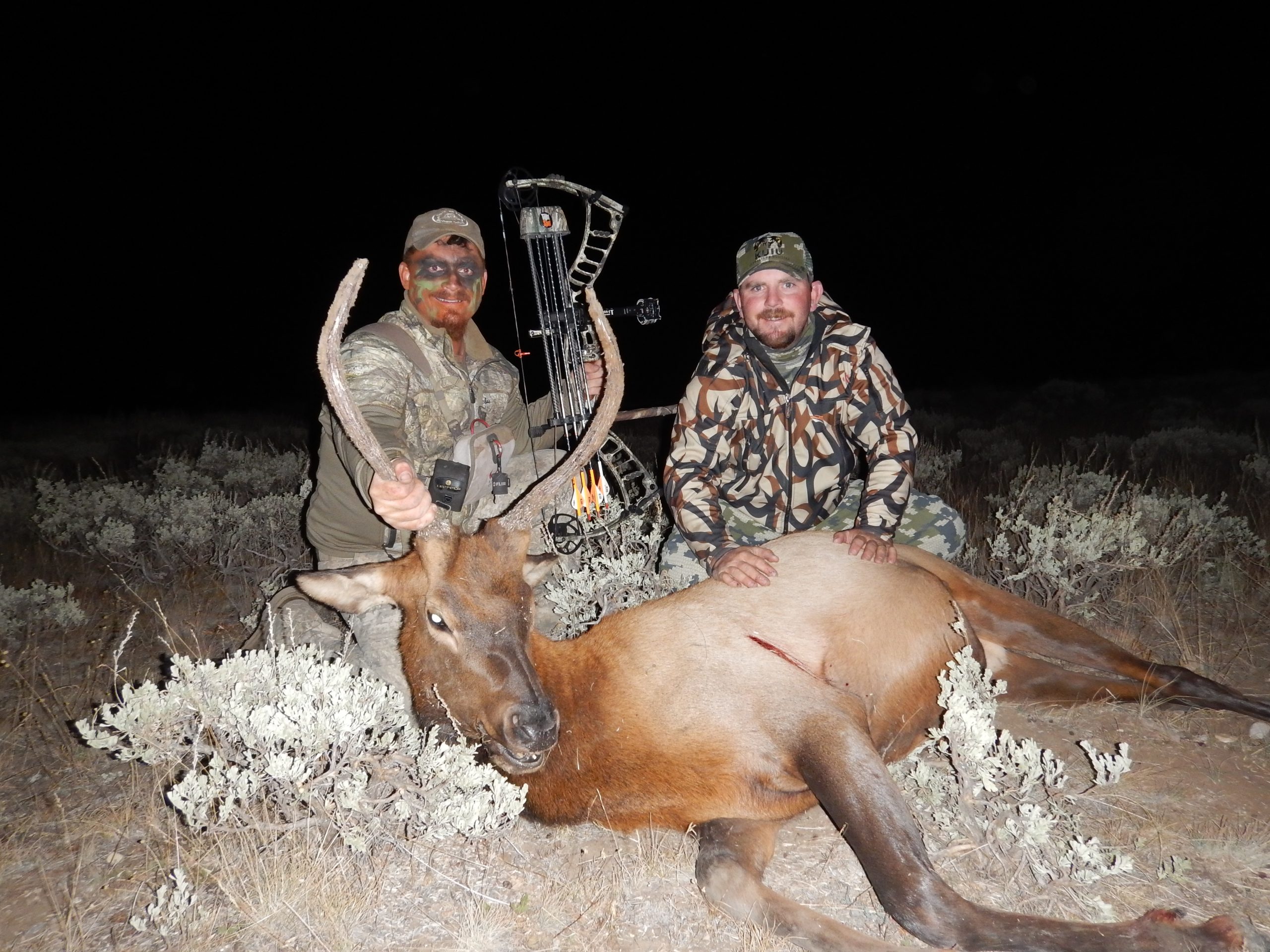
Using white vanes helps you see where the arrow hits. After the shot, be very still, if you jump around in your blind, stand up, or do anything else erratic you will scare the animal and they will run much farther. I’ve shot both elk and deer that seemed not to flinch or even be aware they were hit and then died in front of me. If you get the chance to shoot the animal again, do it. Make your movements slow as you reload, ensure you have the correct range, and send another shot.
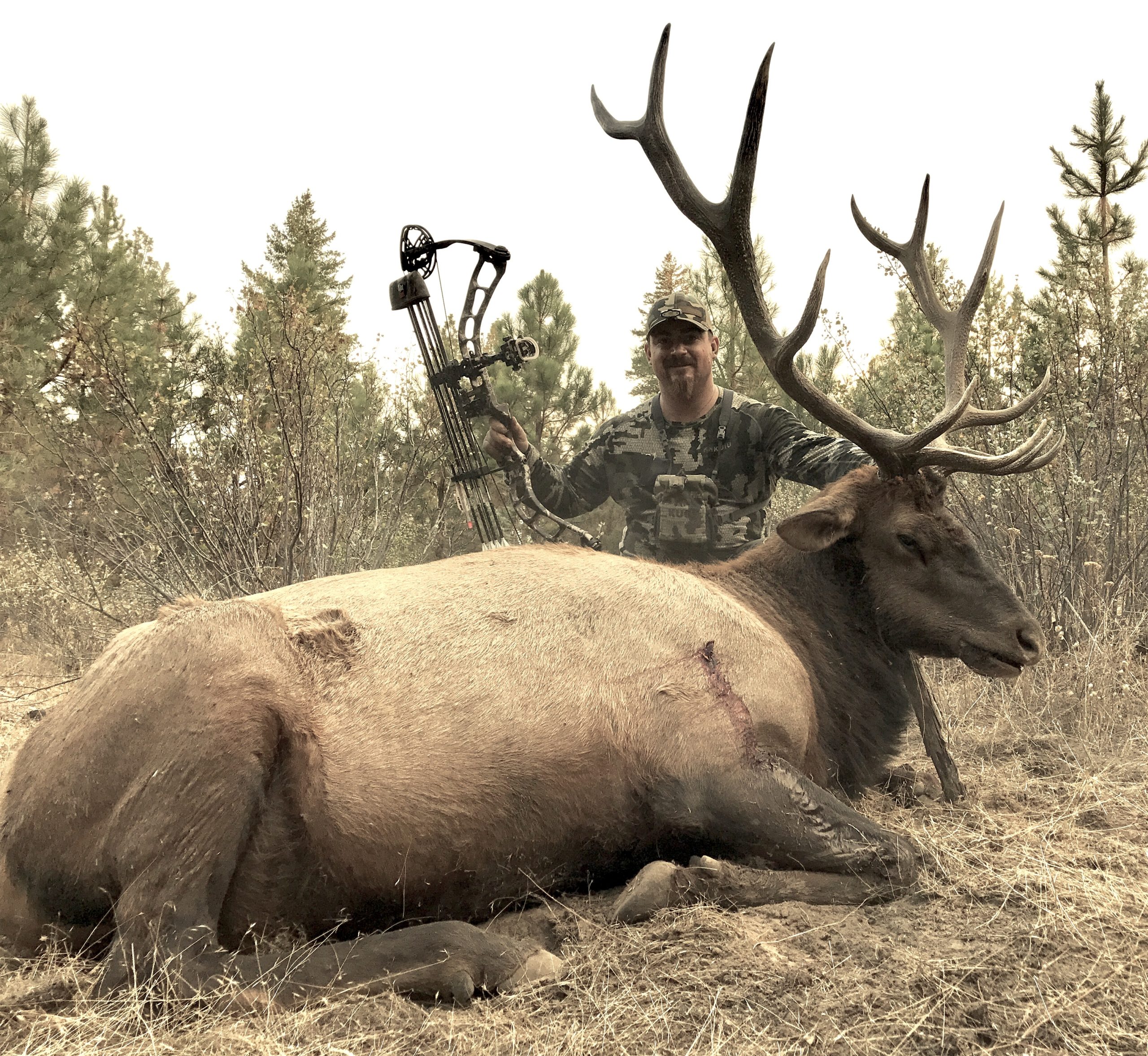
Watch where the animal goes. You’ll want to remember where and how the animal was standing when you shot, and what their behavior was like afterward. An animal shot in the guts will hump its back up. An animal bleeding to death will sway back and forth, its head and ears will lower, and it will stumble and sway. Heart-shot animals often take off at a “dead run” and go farther than if they’d been shot squarely through the lungs. Of special importance is to note the last place you saw the animal. I’ve taken pictures with my phone of the exact spot so my memory doesn’t trick me later.
Now you need to be patient. If you cannot see the animal dead on the ground, wait an hour. I don’t care if it’s 100 degrees outside. You wait. An hour isn’t going to spoil your meat, but bumping a wounded animal certainly might.
Go to where the animal was standing and look for blood and cut hair. If you can find its track, take a picture of it with an item like your knife laying next to it for size reference. This will help you determine if you are on the same animal later on. If you are shooting a heavy arrow and a good broadhead, go past where the animal was standing and look for your arrow. If you are shooting an expandable broadhead and/or a light arrow then you’ll need to look for the arrow along the trail somewhere because you probably didn’t get a pass through. Once you find the arrow look at the blood on the vanes. A white vane will help you learn more about where the arrow hit because it shows the true color of the blood. Dark red blood comes from the liver or veins. Red thin blood comes from muscles. Bright red, pink, or foamy blood comes from the lungs. Smell the arrow, does it smell like guts? Blood that’s sat out for a few hours turns almost black regardless of where it came from in the animal. Just because there are bubbles in the blood doesn’t mean it was a lung shot. If you pour blood out from waist height, it will make bubbles when it hits the ground. This is because a liquid turns into a shape like an umbrella while it falls and separates into smaller droplets which then form smaller umbrella shapes capturing air all the while.
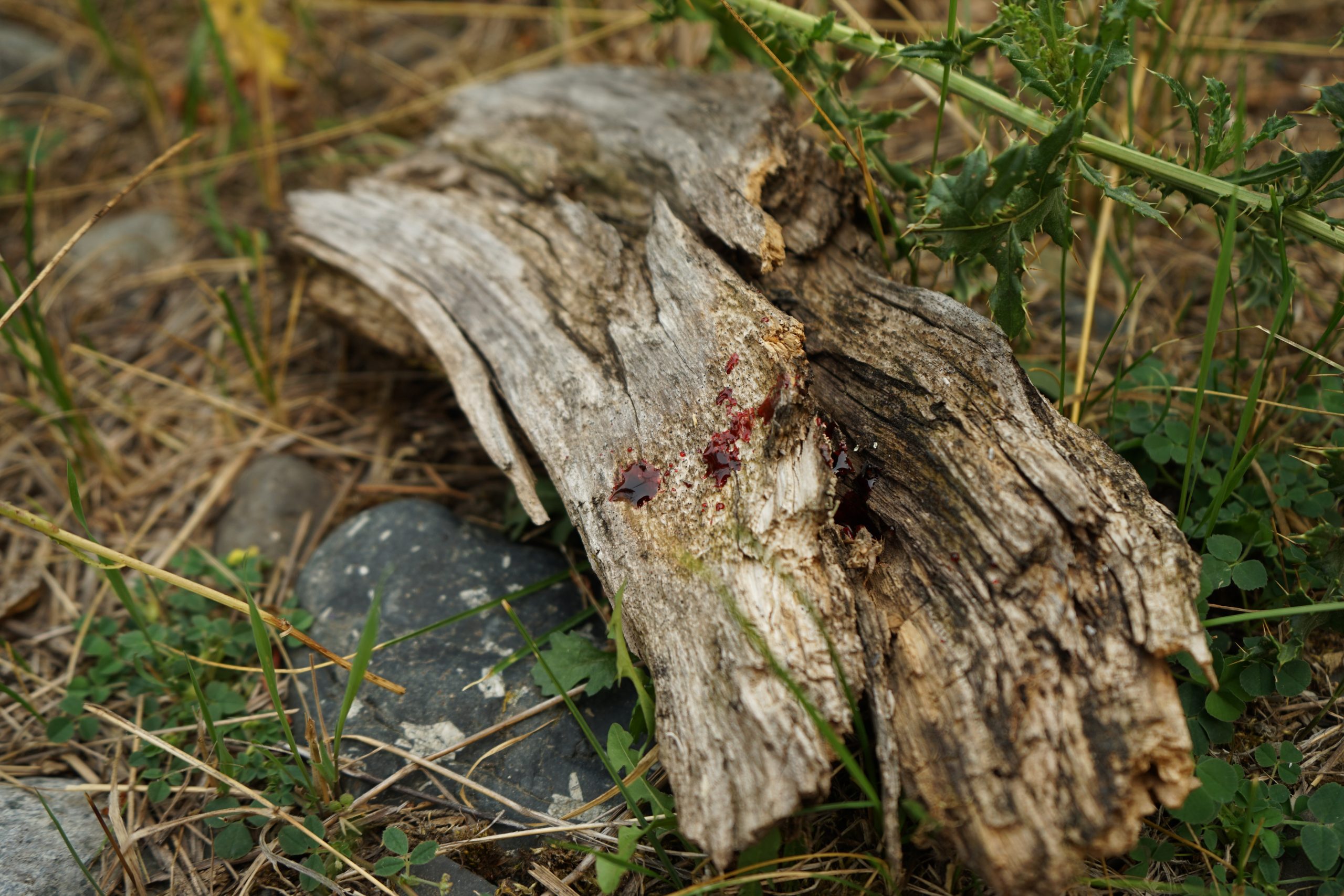
Take flagging and mark where the animal was standing at the shot. Every time you see blood, drop a piece of flagging or tie it to a limb or bundle of grass. Turn on the tracker on an app like Basemap or OnX. Work your way towards the last place you saw the animal. You should be able to start seeing a pattern indicating where it intends to go, and if its path is curving left or right. A hurt animal is fleeing for cover on an escape route they already have in mind. Don’t only look at the ground. The undersides of leaves and pine needles are lighter in color and show blood well. The next time you pass a limb notice how it’s the bottoms of the leaves and needles which touch you the most. Spend most of your focus looking at surfaces like leaves, rocks, and sticks which will show the blood. A drop of blood on the soil is very difficult to see.
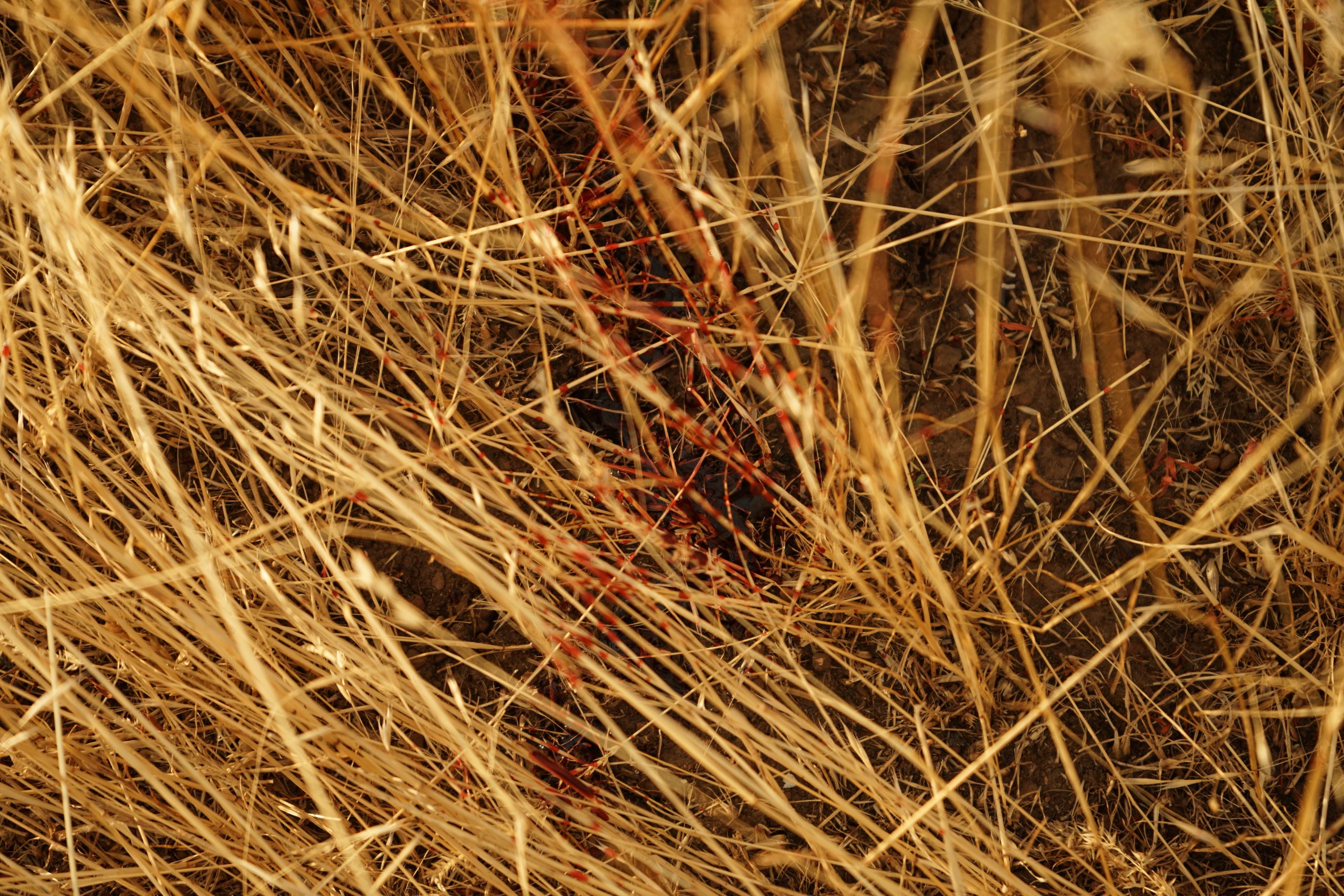
Go slowly and look for hoof prints, which dig more deeply than others. Look for broken vegetation. If the trail starts to slow down and wander from side to side, start looking hard to your left and right. I’ve tracked wounded leopard and cape buffalo in Africa that pulled this trick when they started to succumb to shock so they could ambush whatever was following them. Bears will do the same thing in North America.
In early August I happened upon a black bear while checking game cameras and happened to have a rifle and a bear tag. Easy math. I shot the bear and he took off into the timber. Following protocol, I walked the trail and found a little blood. A few feet farther was a lot of blood. I knew then that this bear was nearby. As I bent down to look more closely I felt something hit the back of my neck. Then I saw a drop of blood fall inches in front of my face. The realization took a moment and I looked up to find a rapidly expiring bear on the lowest limb of a fir tree directly over my head. I had a similar experience with a mountain lion as a teenager, but the lion was dead by the time I crawled on hands and knees under the juniper it had climbed into with its last effort. In both of these cases, I don’t believe the predators were trying to set up an ambush, but it’s a hell of fright either way.
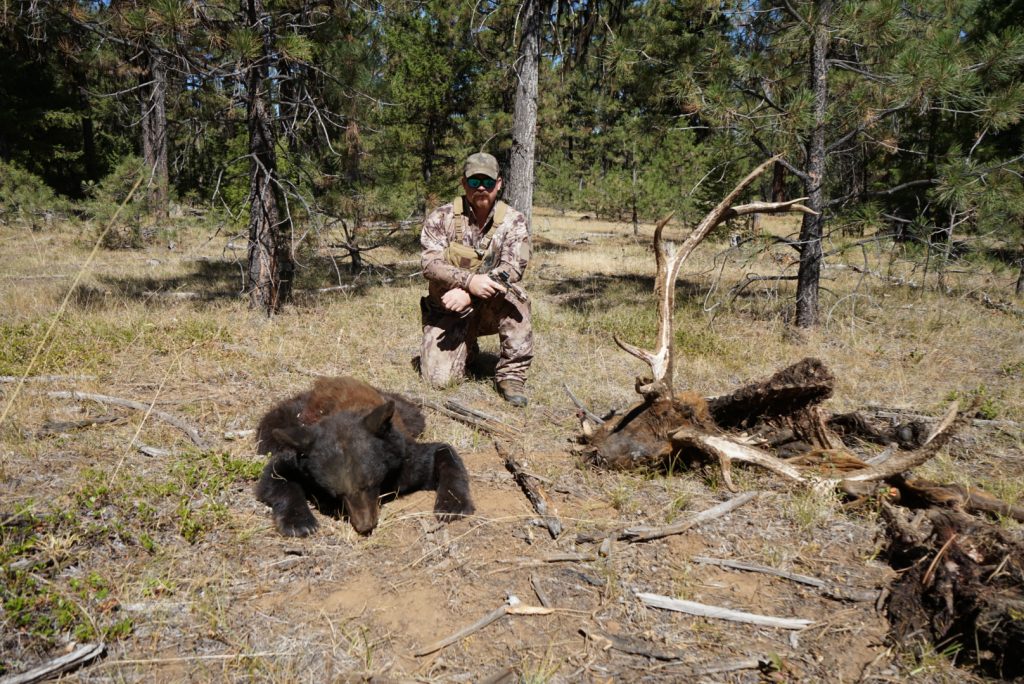
An animal can go into shock after losing 25-30% of its blood and will die after losing 40-50%. A mature bull elk has between six and seven gallons of blood, and on a high lung shot, will fill its entire chest cavity with blood before any of it exits its body. The best shots on elk and deer tend not to have good blood trails, but instead, the animal dies very quickly after traveling a short distance. Mix a little red food coloring and some powdered sugar in water to make quick simulated blood. Pour a gallon of it out on the ground to get an idea of how much blood an elk can lose. If you are just dripping a little every 10 or fifteen feet, that gallon can last for miles and miles. That said, if you make an animal bleed you should punch your tag. Please don’t look for a couple of hours and assume that buck or bull is going to be fine. Some elk survive being shot by bullets and arrows and I’ve found projectiles in them more than once. However, many die from infection weeks later or die that winter because their body condition is too poor. If you make it bleed, punch your tag.
If you have followed the trail for 100 yards and haven’t found the animal yet, you need to back off. Wait an additional 3 hours before resuming your blood trail. Elk shot in the liver or one lung tends to die at around four hours if they aren’t bumped. In my experience, the raghorn bulls go 150-200 yards before bedding down and a mature bull goes roughly a quarter mile. Whitetail and mule deer shot in one lung or liver tend to go 150-200 yards if not bumped. If they are bumped they can go over a mile.
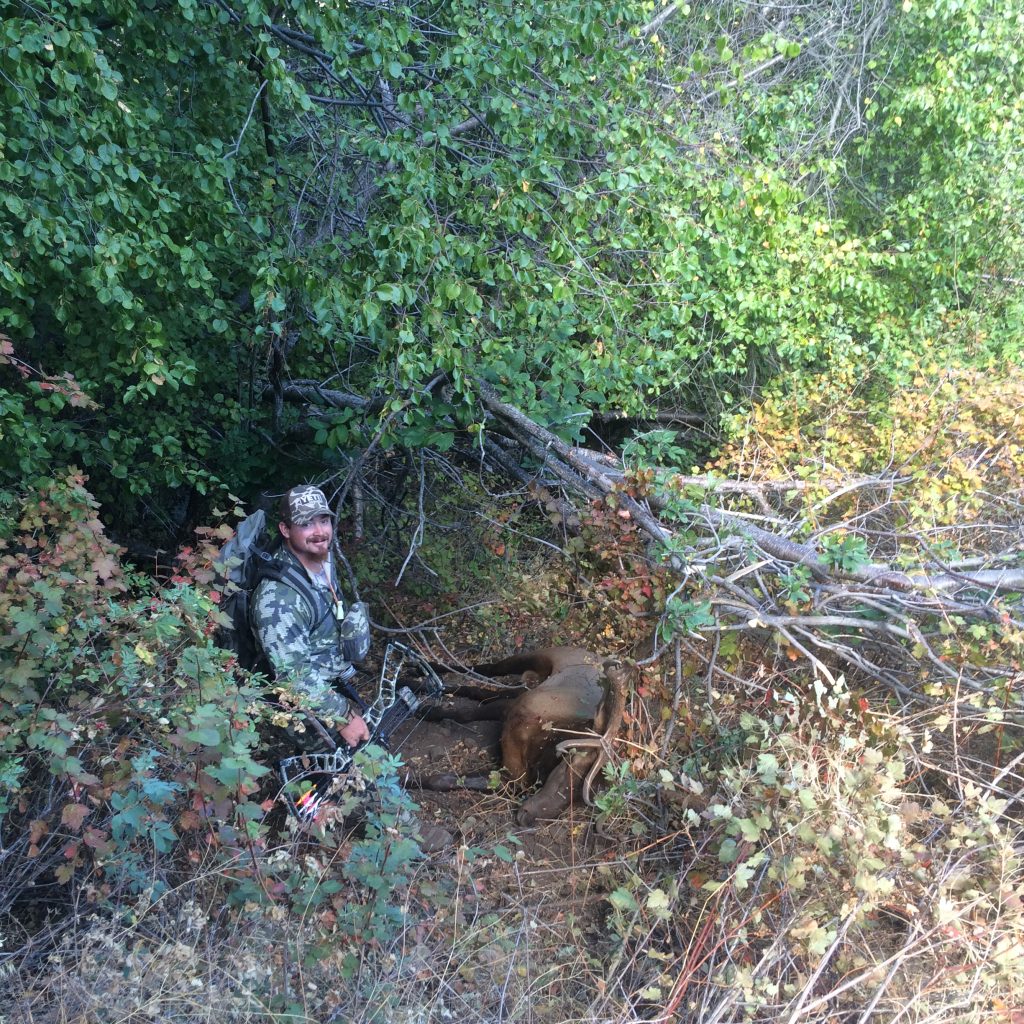
If it’s daylight make sure you have your bow with you and are ready to take a follow-up shot if needed. If it’s night, shooting is illegal, even to follow up on a wounded shot. Some people prefer LED tracking lights while others prefer fluorescent, this is something to know about yourself before you head into the woods. I prefer a white light over the whiz-bang blood trailing lights. If you are dry tracking the animal, meaning looking for hoof prints, hold your light as low and parallel to the ground as possible to get the shadows of the track to provide some contrast. I’ve crawled on hands and knees for miles following blood trails, and while it is brutally painful, it is also easier to see small flecks of blood if you are closer to them.
During archery season if you decide to come back the next morning to start searching, make sure it’s at first light. Bacteria in warm meat can double every 40 minutes. Typically you are going to lose the entire half of the animal which is touching the ground, and often you will lose the entire thing. I once had a client shoot a bull at last light, made a fantastic shot, but the expandable broadhead failed when it hit a rib bone, and the wound only damaged one lung. We found the bull at the quarter-mile mark the next morning at 0800. I had the meat hanging in a 37-degree walk-in cooler with a fan blowing on it by 0930. We placed it in a portable cooler and took it to the butcher shop in town at 1400, and the shop refused to take the meat because it had already spoiled. Temps that night were in the 30’s. This is consistent with other experiences I’ve had leaving bulls out overnight. I’ve recovered two other bulls that we were able to salvage meat from, but they are exceptions to the norm.

A few pro tips: Bring an extra light. Bring a spray bottle of hydrogen peroxide, it foams when it hits blood. Don’t go archery hunting in the rain, blood trails are immediately washed away, and an improperly hit animal becomes next to impossible to find. Bring a friend and take turns looking for blood and keeping eyes up looking for the animal, this will keep everyone fresher and reduce fatigue. If using dogs is legal in your state, call someone with dogs immediately. Contrary to popular belief, a dog isn’t following blood so much as the stress pheromones of the animal doing the bleeding. I’ve seen dogs sprint down trails that took me an hour to go 100 yards.
For less than $10 you can grab a bottle of corn syrup and some red food coloring and go out with a buddy and practice laying blood trails and following them up. Learn how to use flagging and a tracking app on your phone. This is a critical skill and you can have a lot of fun learning it in a low-stress environment. You’ll be amazed at how long of a trail you can make with a pint of liquid.
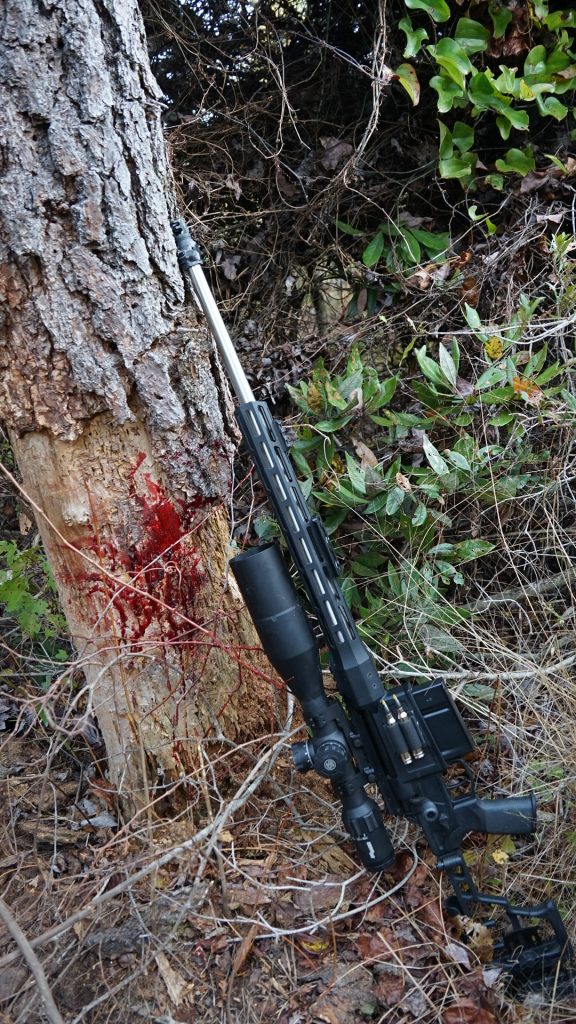
Let’s finish the story we started with.
“Where did I hit him?”
“I think you hit him in the nose.”
“You’re kidding.”
“I’m not.”
I found the arrow with the broadhead broken in half. It looked like he’d gotten less than two inches of penetration, but there was blood and now it was dark.
“We will come back in the morning. I’m not optimistic, but at least there is blood.”
I was exhausted after three weeks of guiding archery hunts with an average of four hours of sleep per night, but that night I didn’t sleep. I replayed the evening over and over again in my mind. The bugles and failing light. The bull running behind the hot cow and the forest duff blowing away from their feet and them skidding to a halt only yards away from me. It had all been so perfect and then who knows what happened on the shot. Misses can happen to anyone and I’ve seen way more misses at close range than at medium range.
I made two pots of black rifle coffee, drank one, woke up the hunters and other guides, and then went out into the morning dark to fuel up the side by side and made sure I was stocked on everything in my blood trailing kit.
We started where I found the arrow and to my surprise found relatively consistent blood. Drops every three to five feet and the occasional spot the size of a hamburger where the bull had stopped. At 500 yards the blood stopped but I picked it up again in the same direction of travel which was easy to see by looking back along my line of flagging on the ground. I told the hunter, “look, I don’t know how long an elk can bleed from his nose, but if he keeps bleeding I will find him.”
At roughly half a mile the blood trail suddenly turned into a swath and I saw where the bull had fallen. I looked up and found him lying on the ground deader than a bad joke. The broadhead had actually hit along the jaw and lodged into a cervical vertebra. Eventually, it had worn through the carotid artery and the bull had died within seconds. With incredible fortune, we had recovered the bull, and somehow we were able to salvage almost all of the meat, too.
That brings me to the last tool you need on a blood trail. Optimism. Never leave home without it.
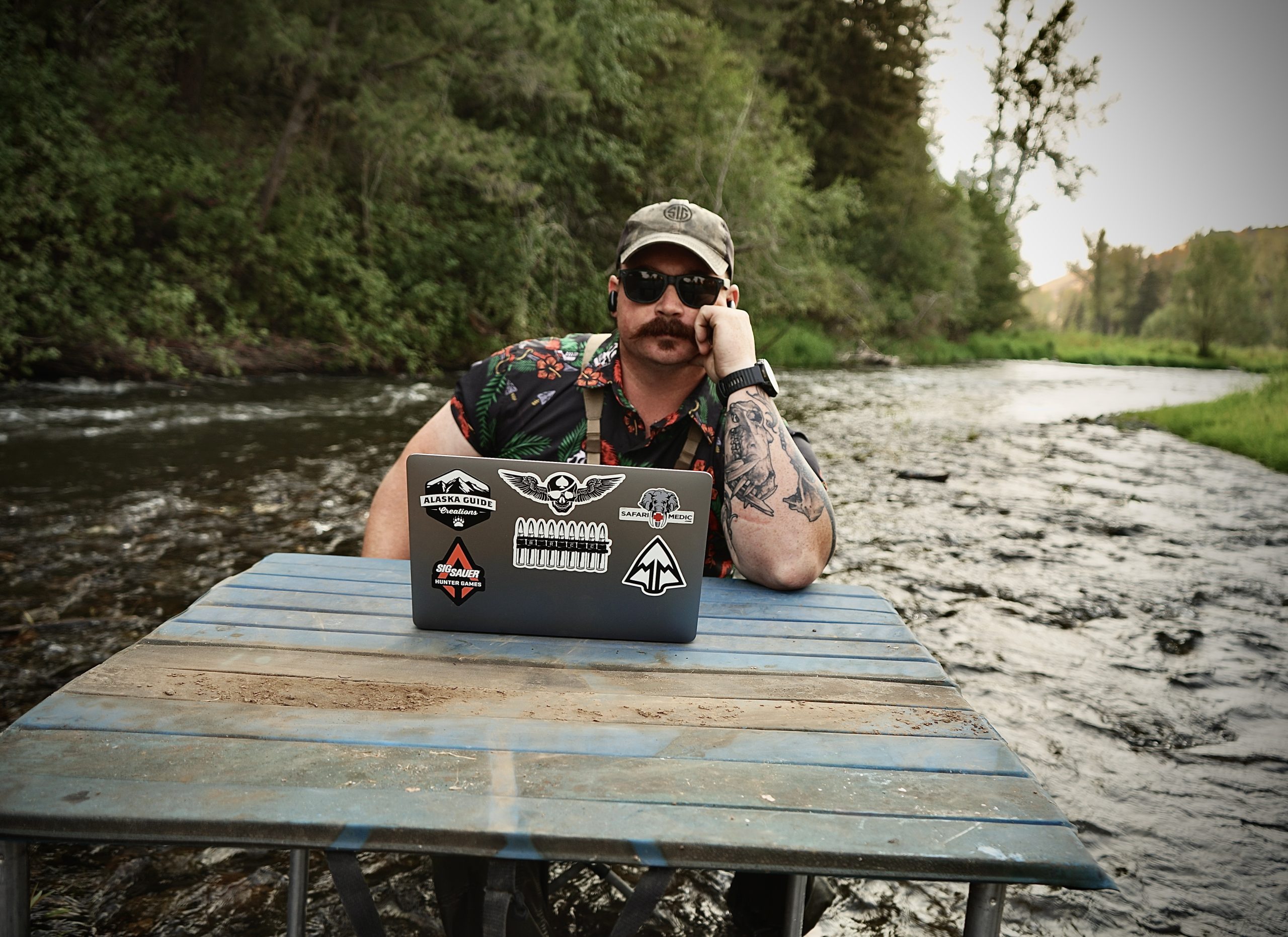
***Buy and Sell on GunsAmerica! All Local Sales are FREE!***
